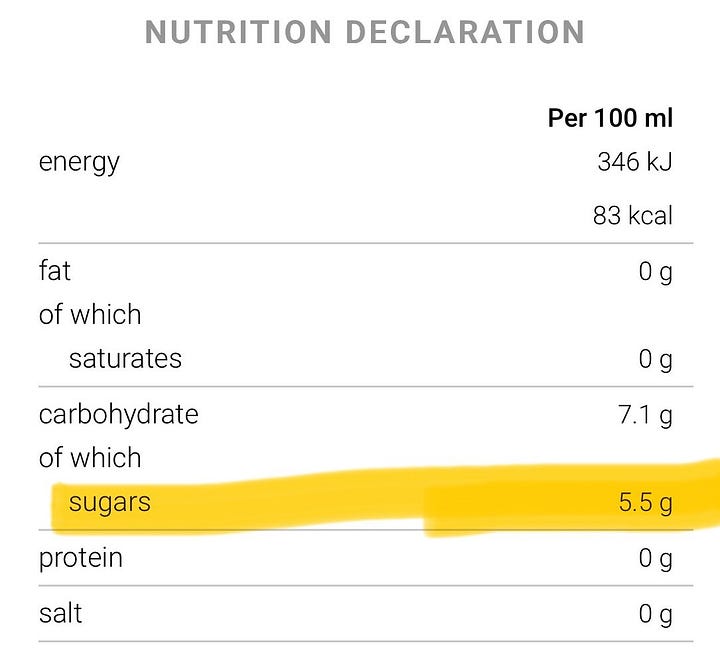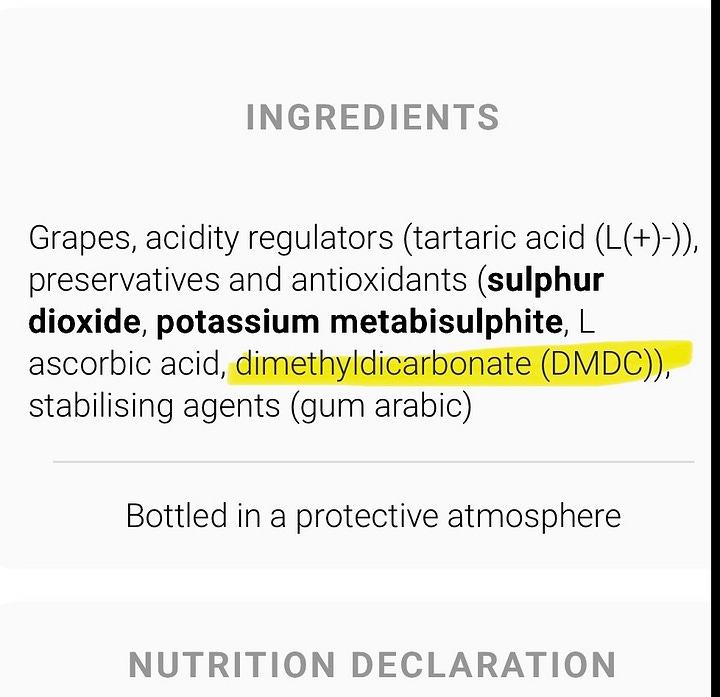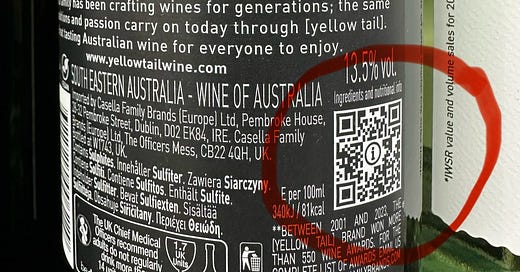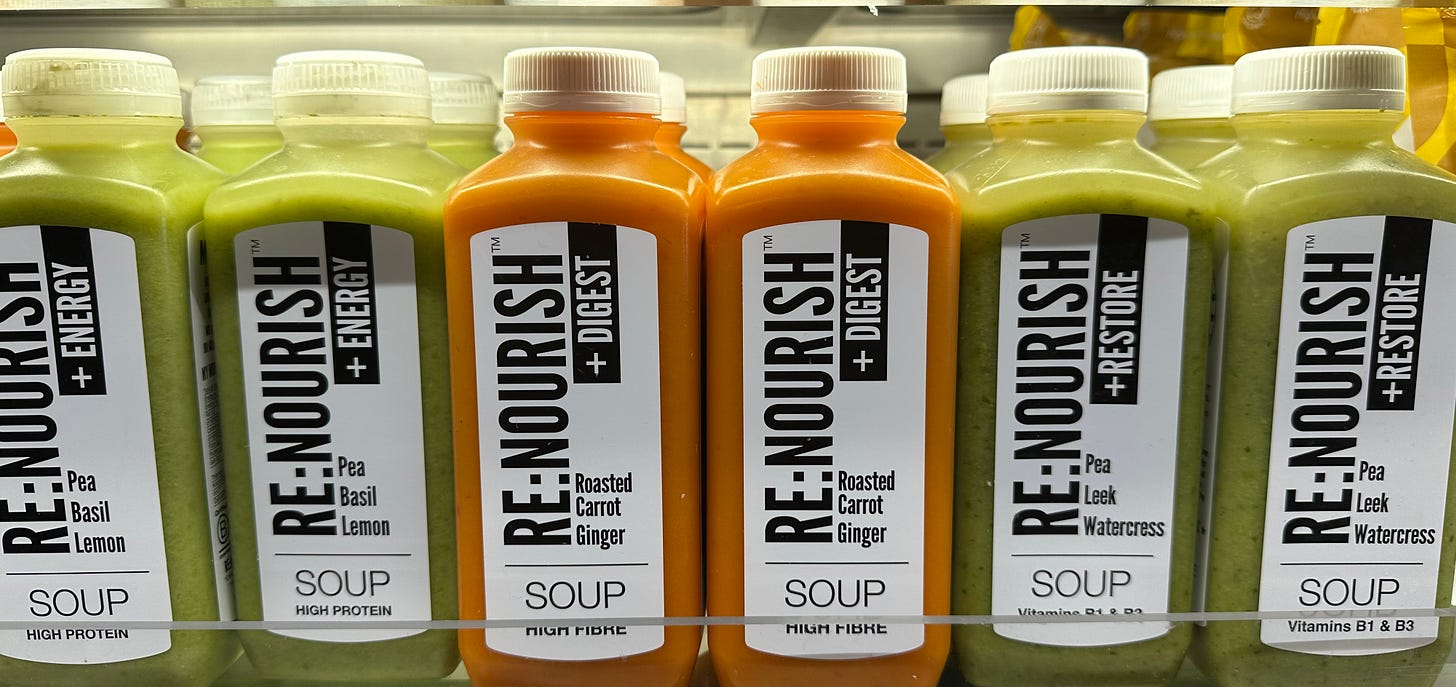Is your red wine 🍷 helping or harming your gut?
How to track down the sugar load, and see what additives and processing agents may be lurking inside...plus, a summer soup tip
There’s been a lot of hype over the last few years about red wine being supposedly “good for your gut”.
This has come about because we now know that polyphenols, plant chemicals in the pigment of red wine, can act like fertiliser on beneficial bacteria in your digestive system.
When these good microbes multiply, many areas of health can benefit - from better digestion to brain and immune health.
But it’s a bit silly in my opinion to conclude that red wine is “good for your gut” when you have to ingest other unwelcome substances in the process.
There are purer ways to get your polyphenols.
Have a handful of blueberries! Cook an aubergine with the skin on!
They don’t come laced with hidden rubbish you probably don’t want such as sugar, additives, and processing agents.
When we get to the wine aisle in the supermarket, it can be a bit of a blind spot. Little detailed labelling easily in sight.
Till this week, I noticed a teeny QR code on the back of some wines (but not all).
This is because wine from late 2023 onwards wine coming out of the EU (and some others too, voluntarily) are letting us have more of a peep at what is in them. Why didn’t I know this before?
Point your phone camera at said QR code, and press a link to ingredients and nutritional information. Bingo!
Here are some discoveries I made this week…
Red wine can be high in sugar
Usually one thinks of white wines as being sugary. Almost half of an adult daily allowance of sugar in one large glass of this “enjoy chilled” one, Barefoot Jammy Red.


All this is behind the QR code There’s 5.5g per 100ml!
So a large glass 🍷, of say 250ml, about third of a bottle or 2 small glasses, would have almost 14g of sugar (of your daily recommended max of 30g).
That’s 🥄🥄🥄 three and a half teaspoons of sugar. Would you put that many teaspoons in a cup of tea? Probably not. Nor would many of us welcome it in a glass of red wine.
No wonder so many people I work with tell me they find wine obesogenic!
There are additives and processing agents with unfamiliar names that though legal, may not in my experience make some people feel great


Ta dah! Follow the QR code and these substances appear Take nutritional therapy clients of mine - with autoimmune conditions or irritable bowel syndrome.
Many have described anything from sneezing and bloating to skin reactions to head aches to feeling sluggish in the days after small amounts of industrially-produced wines.
Naturally-occuring compounds called histamines (found in natural wines too), or an irritation by the gut lumen to the alcohol could be reasons for some reactions.
But I suspect there is a more going on here and some ingredients such as “DMDC” (an agent to prevent spoilage) is controversial but not well-studied in regards to gut and immunity. Goodness knows who would fund that study?
Pesticides can be another issue from industrially-produced wines.
There’s more science coming out on pesticides and how they can disrupt our microbiome (see below).
Take aways
✅ If you really are interested in having polyphenols for your microbiome (gut bacteria), such as anthocyanins, eat an aubergine. Have a handful of blueberries! Low in sugars, no processing agents and additives attached.
✅ If you do want some polyphenols alongside your alcoholic head spin consider natural or low intervention wines and artisan ciders with less additives/processing agents. They are often organic so without pesticides. Expensive, but that may encourage us to drink less alcohol overall. I wrote about natural wine and artisan cider potential gut-health benefits you can read about HERE and HERE.
✅ Look out for the QR code to check sugar levels and additives in your wines and monitor how you react to them as you can now see more easily what you are having. Btw we all handle them differently.
✅ If you’re interested in sugar and wine see this great article Finding Wine’s Sweet Spot by
which really got me asking how much sugar is in the wine we buy.Open, heat, eat (or even serve chilled in hot 🥵 weather!)
I discovered THESE delicious unprocessed soups this week, £3.69 each.
Excellent for when WFH and short of time. Great way to deliver a variety of different types of fibre and polyphenols to the gut without having to chop, cook and clear up much.
The one I ate had pea, leek (a prebotic) and watercress (3 of the weekly 30 plant target) all in one bowl.
Want some extra protein? Grate a boiled egg on top like the Spanish do on their gazpacho, or add a dollop of quark, or even mash in some silken tofu for a vegan option.
Available in main supermarkets in the UK. Sainsbury. Tesco. Waitrose. Ocado.
Finally a quick note - I’m trying out posting this weekly newsletter on a Thurday - and hope this helps with shopping and planning for the weekend more.
Further reading
Plamada and Vodnar. (2022). Review: Polyphenols—Gut Microbiota Interrelationship: A Transition to a New Generation of Prebiotics. Nutrients. DOI/10.3390/nu14010137
Mesnage et al (2021). Use of shotgut metagenomics and metabolomics to evaluate the impact of glyphosate or Roundup MON 52276 on the gut microbiota and serum metabolome of Sprague-Dawley rats. Environ Health Perspect DOI: 10.1289/EHP6990
If you found this useful please leave a like ❤️. It helps me see what is being read and appreciated, plus makes it easier for others to find this newsletter on Substack listings.







I had seen those QR codes on drinks and ignored because I just assumed it was just marketing, so very interesting to find out it is actually useful! I rarely drink wine these days but I do enjoy a glass now and again. Top tip for anyone wanting to reduce their wine intake is to invest in some small glasses. When I wanted to cut my wine intake a few years ago I did this and noticed to took me the same amount of time to drink 125ml from a small glass as it did to drink 250ml from a large glass!
I will be using that scanner! Thank you Jeannette.